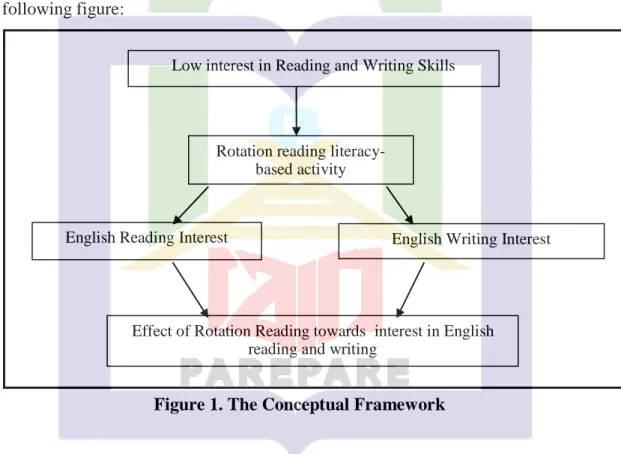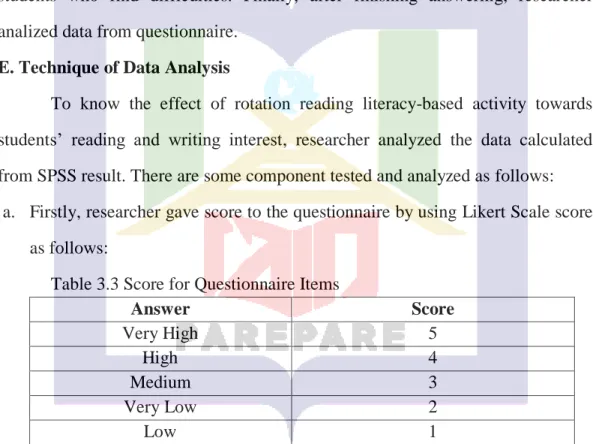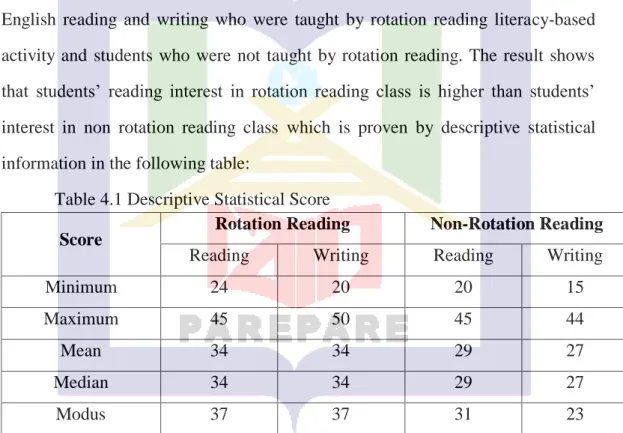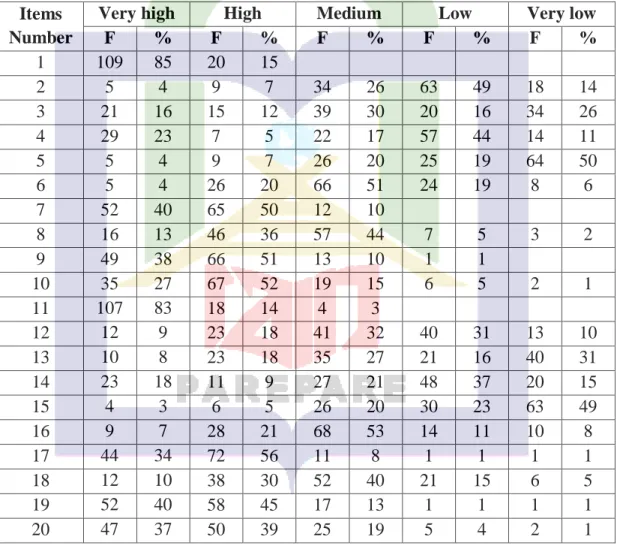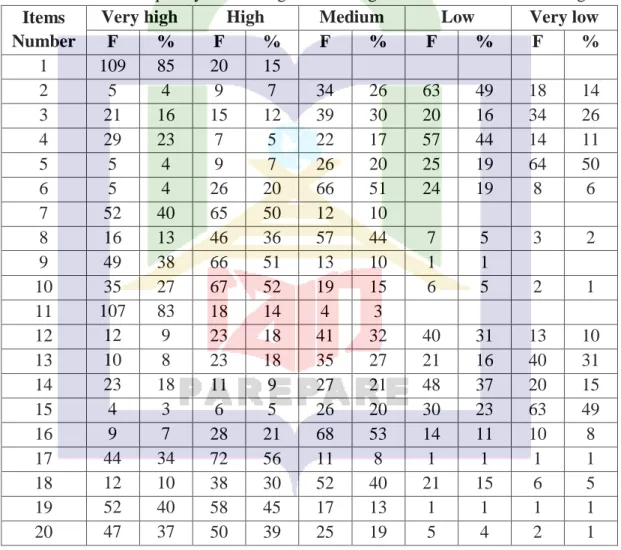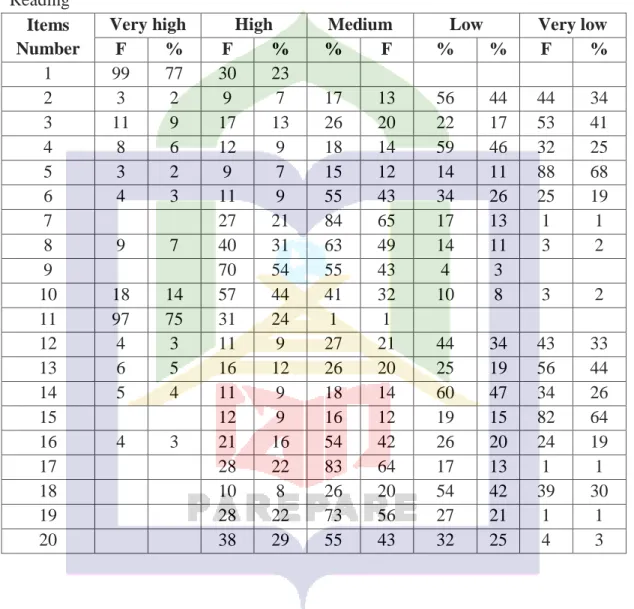The items from her masterpiece in this thesis are signed by citation and referenced in the bibliography. If it can be proven that the thesis contains discrepancies, copied or duplicated by someone else, this thesis and the degree obtained will be deferred. First of all, the author would like to express her sincere gratitude to Allah SWT., the Lord of the universe, who gave her the opportunity and courage to complete this thesis in partial fulfillment of the requirements to complete her studies and obtain the degree of Magister to obtain. Pendidikan of English Education of the Postgraduate Program of the State Islamic Institute (IAIN) of Parepare.
Secondly, the writer is grateful to her big family, parents, husband and lovely daughter for their eternal affection which encouraged her, support which facilitated her and prayer which guided her in writing this thesis. To the lecturers of the study program Pedagogy for English Studies for their guidance during the years of the writer's studies. Finally, the writer would like to thank the many people who saw her through this thesis, for their support and contribution to its realization.
Finally, it is undeniable that this thesis is far from complete, although much effort has been put into making it complete. Hopefully, this assignment can help the reader both theoretically and practically in the field of English language teaching or other related field.
INTRODUCTION
Questions of the Research
Objectives of the Research
Significance of the Research
This research is expected to contribute to the science and development of reading and writing interests of students in schools through rotational reading-based literacy activities, especially in Class VIII of SMP Negeri 1 Labbakang, Pangkep Regency. As an alternative for teachers to increase students' interest in reading and writing at school. As an addition to library materials, especially the problem of research results in reading and writing interests of students in junior high school.
As a study material for the government to make a program to stimulate students' interest in reading and writing in school.
REVIEW OF RELATED LITERATURE
Previous Related Research Findings
Conceptual Framework
This research is based on the fact that students' interest in reading and writing in Labakkang High School 1 is still low. Therefore, it needs a strategy that can develop interest in reading and writing by giving a reading task that is constantly built as part of learning in the classroom with the main task to make a review as a literacy activity.
Operational Definition of Research Variables
METHODOLOGY OF THE RESEARCH
Subject of the Research
Instrument of the Research
The findings of this research present the data of the effect of rotational reading on students' reading and writing interest. The result shows that students' reading interest in rotating reading class is higher than students'. Furthermore, the average score of students' writing interest in rotational reading class (34) is in the range of 31-40 under classification of high interest.
Meanwhile, in non-rotational reading classes, the mean of students' writing interest (27) showed to be in the range of 21-30 under medium interest classification. In the following section, the researcher also explained the frequency of students' reading and writing interest in rotational reading classes and non-rotational reading classes. This result shows the relationship between rotation reading related to the duration they spend except study time when they.
This result shows the correlation between the number of readings and the frequency of visiting the library in a month. The result shows that in the rotation reading class, 38% of the students are very happy when they receive a reading book on their birthday. The result shows that 49% of students in the reading class on rotation do not have a magazine or newspaper to which they subscribe.
Meanwhile, in non-rotational reading class, 64% of students have no magazine and newspaper subscription. Meanwhile, in non-rotational reading class, none of the students really like the writing task of non-rotational reading activity. Meanwhile, in non-rotational reading class, none of the students feel very happy and 22% of them feel happy.
The result of this research shows that reading in rotation has a significant effect on students' interest in reading and writing. The result shows that flip reading also has a significant effect on students' interest in writing. Unfortunately, this method does not affect students' interest in reading and writing in the non-rotational reading class.
It means that rotational reading has no effect on students' high or low interest in reading and writing in the non-rotation reading lesson. This research provides information about the effect of rotational reading on students' reading and writing interest.
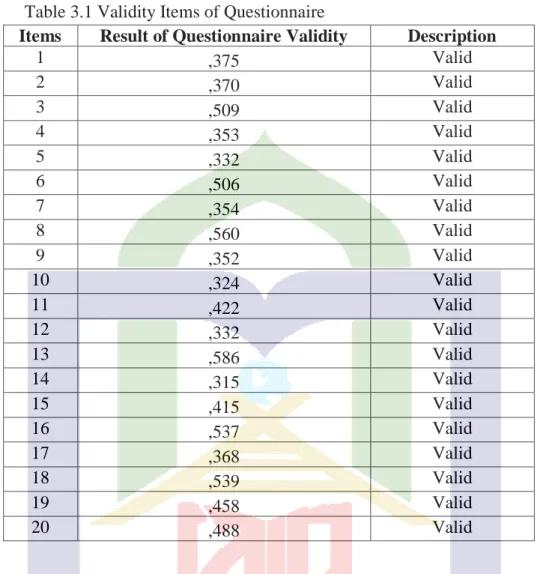
Procedure of Data Collection
Technique of Data Analysis
To know the effect of rotation reading literacy based activity on students' reading and writing interest, the researcher analyzed the data calculated from SPSS result. In addition, the discussion of this research explains the findings and supported theories as the result of this research.
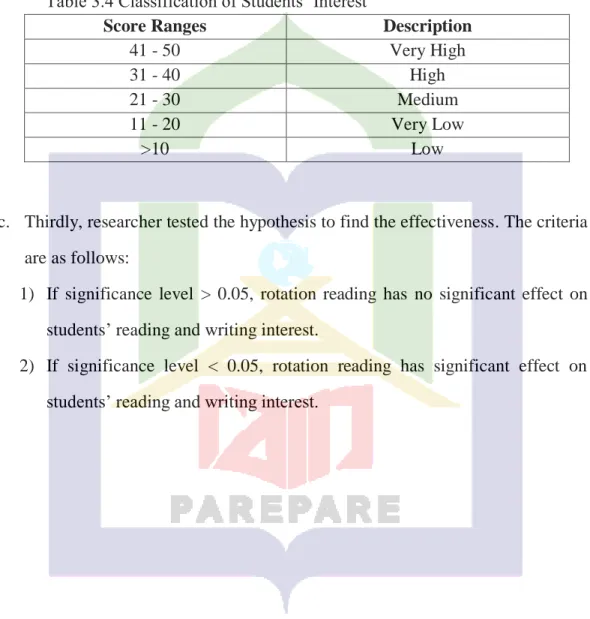
Findings
This result shows the correlation of students' interest in reading according to their reading resources. This result shows the correlation of students. interest in reading related to their frequency of book purchases using their savings. This result shows the correlation of students' interest in reading in relation to their activity while doing something.
This result shows the relationship of students' interest in reading with their feeling when they accept reading the book as a gift. Meanwhile, in the non-rotational reading class, only 14% of students feel quiet very often when reading. This result shows the relationship of students' interest in reading with their feeling when reading a book.
Table 4.15 shows that in the rotating reading lesson, 83% of the students think that writing is very important. This result shows the relationship of spin reading with how often they visit the library in a month to find references. This result shows the correlation of students' interest in writing about the references they record, namely magazine and newspaper.
This result shows the correlation between rotational reading and their opinion about the teaching method of rotational reading and writing tasks. The data in table 4.22 shows that 10% of the students do this very often during the reading class and 30% of the students do this often. Meanwhile, in the non-rotational reading lesson, none of the students do this very often, and only 8% of the students do it often.
This result shows the connection of students' interest in writing about their activity while doing something. This result shows the relationship between students' interest in writing and their feelings when they receive a book as a gift. This result shows the connection of students' interest in writing about their feeling when they write a story or a summary.
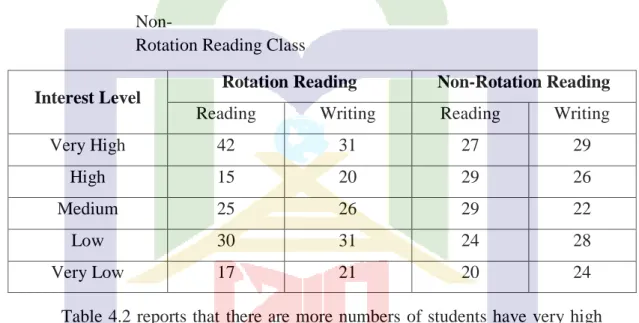
Discussion
This result implies the basic principle of rotational reading, namely the constant frequency of reading the book in correlation with the students". The result also shows another effect that interest can improve the success of the spin reading method. Circulated reading, which is one of the literacy activities, makes the reading activity an integral part of learning.
Pupils at the school where rotational reading is used in Labakkang also save their money to buy reading resources. The basic principle of rotational reading is to read many books by rotating to read the book and then make a summary from the books students have read. The purpose of giving the task of writing a summary is to see the students' interest in writing.
If students' interest in reading is high, interest in interpretation and skill will also be high. On the contrary, if students' interest in reading is low, their interest in writing presentation text and writing skill will also be low.86 This correlation is similar in the study of Delviawati et. The results showed that students with high interest in reading have better skills in writing expository text than students with low interest in reading.
This chapter clarifies the result of a statistical test to find out the effect of rotation reading on students' reading and writing interest. This research aimed to find out the effect of one of the teaching strategies, namely alternating reading versus students' reading and writing interests. The result showed that students who study English in a reading and writing class have a higher interest in both reading and writing in English than students who study English in a reading class without rotation.
In addition, the result shows that the number of students who have a low level of interest in the rotation reading class is smaller than the students in the non-rotational reading class. The topic of the text that students read also helps build their interest in both reading and writing. It is important for the next researcher to conduct an experiment with this rotational reading method and collaborate with other strategies that can increase students' writing interest.
CONCLUSION AND SUGGESTION
SUGGESTION
For the English teachers at SMPN 1 Labakkang, it is important to enrich the students' reading resources not only the printed books in the library, but also the electronic books in the online library. For the English teacher program designer it is important that they conduct an e-library training for the teacher where teachers can be trained how to use the e-library so that students can enrich their reading resources from online. The role of interest in learning from science text and illustrations: on the distinction between.
Kelly Geler, “The Development of Reading Interest and Its Relationship to Reading Ability,” Journal of Research in Reading, Vol. Frijters, Motivation during an excessively challenging reading task: the buffering role of relative topic interest, (Routledge: The Journal of Experimental Education, 2011), p.
